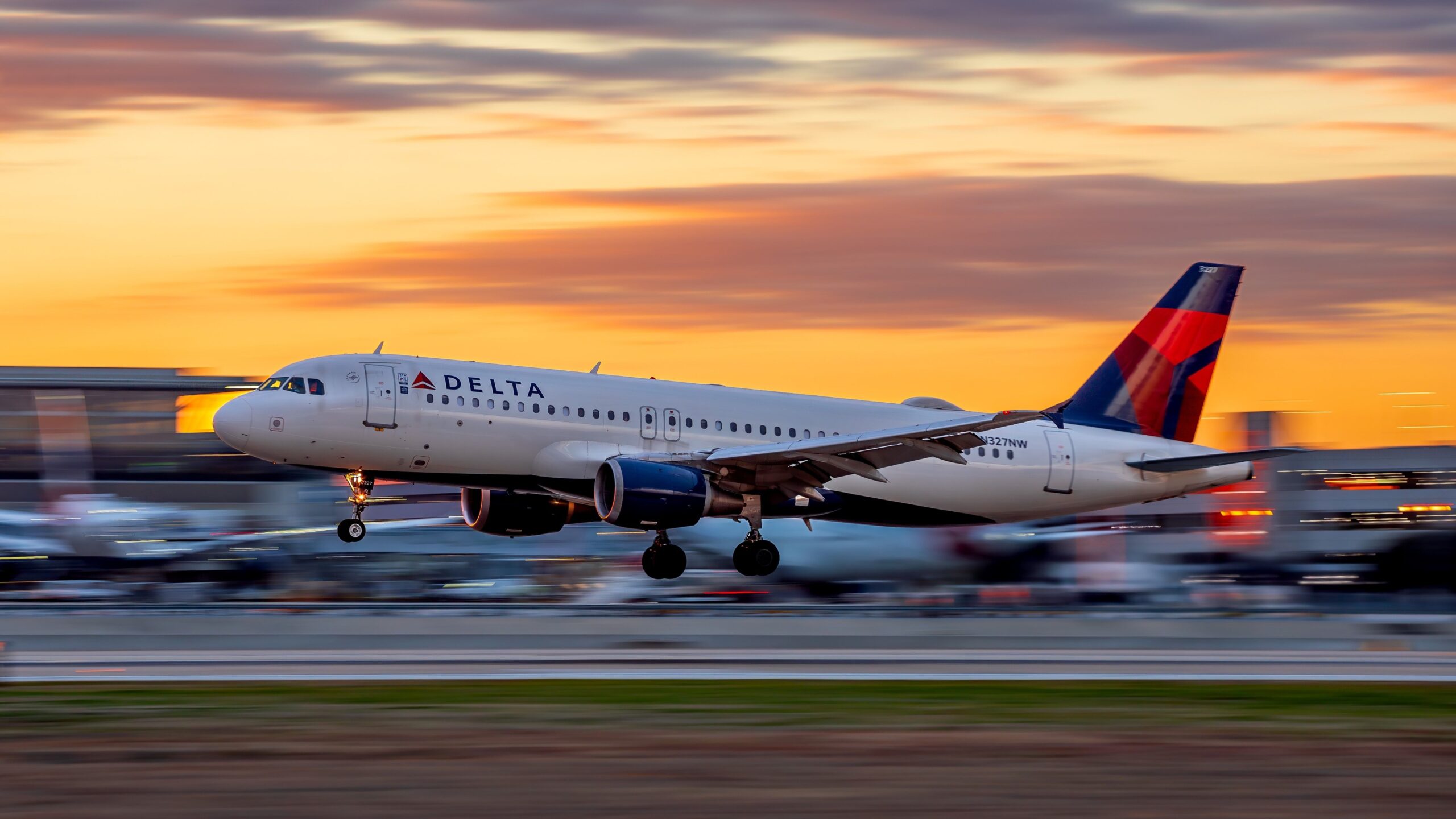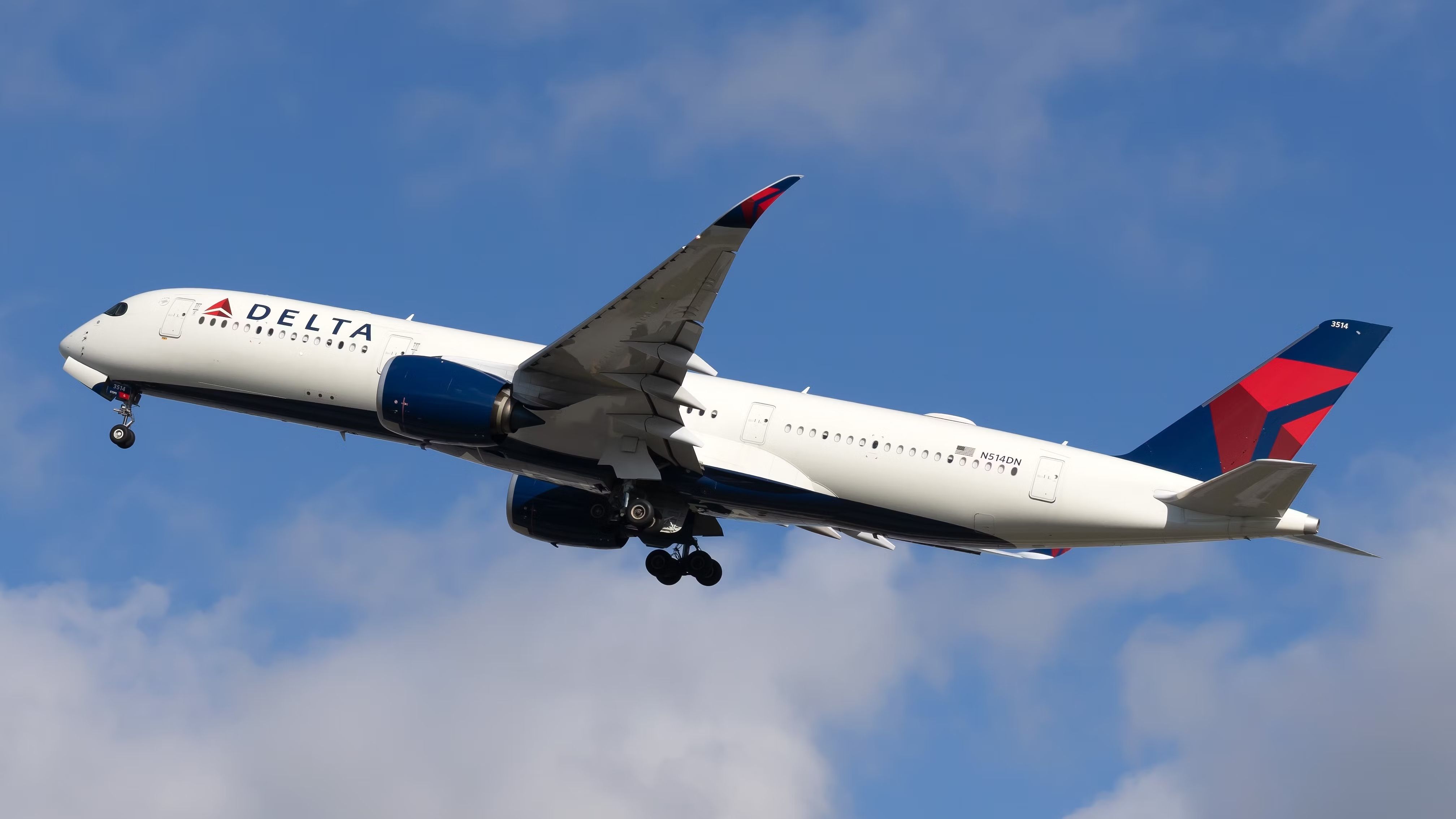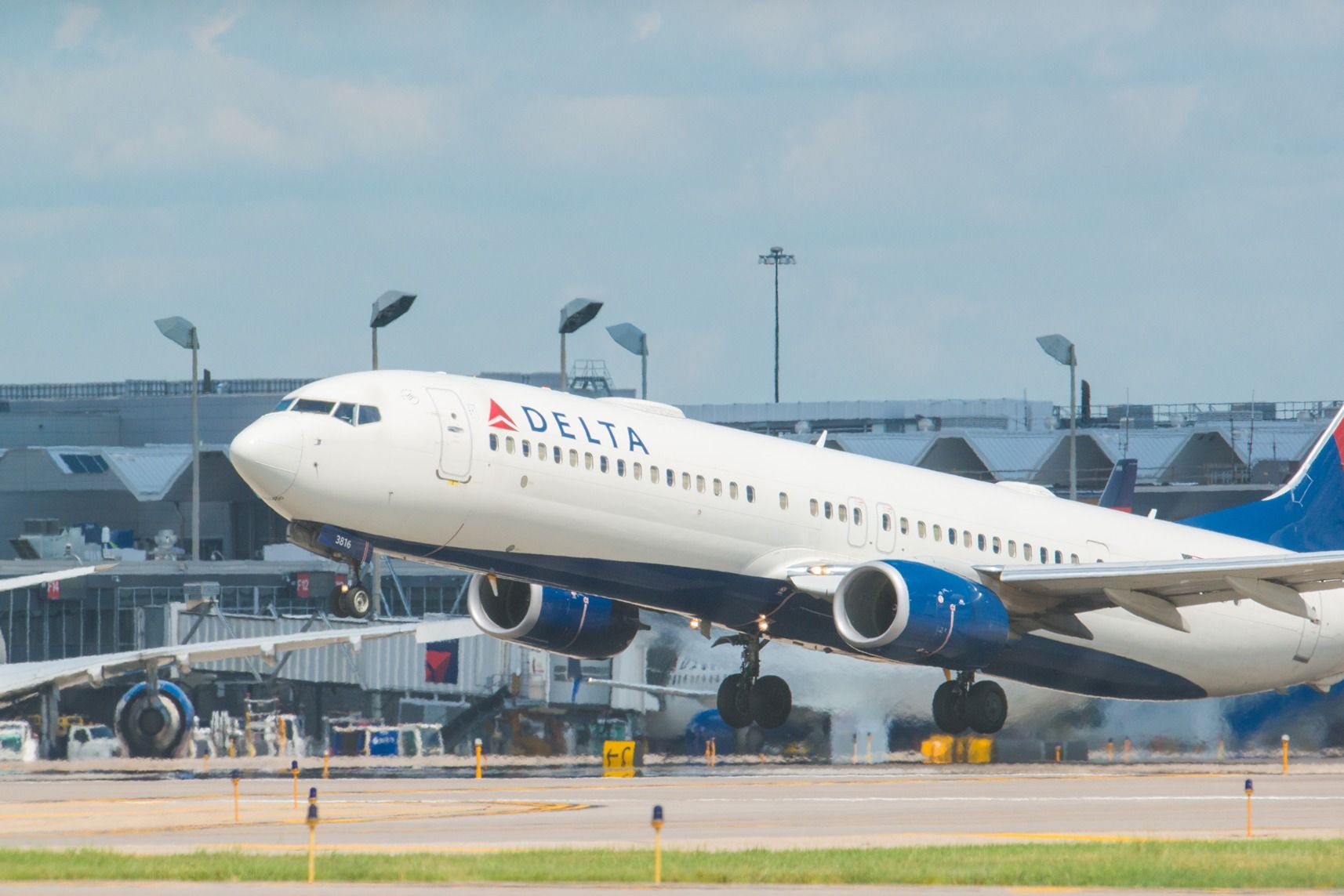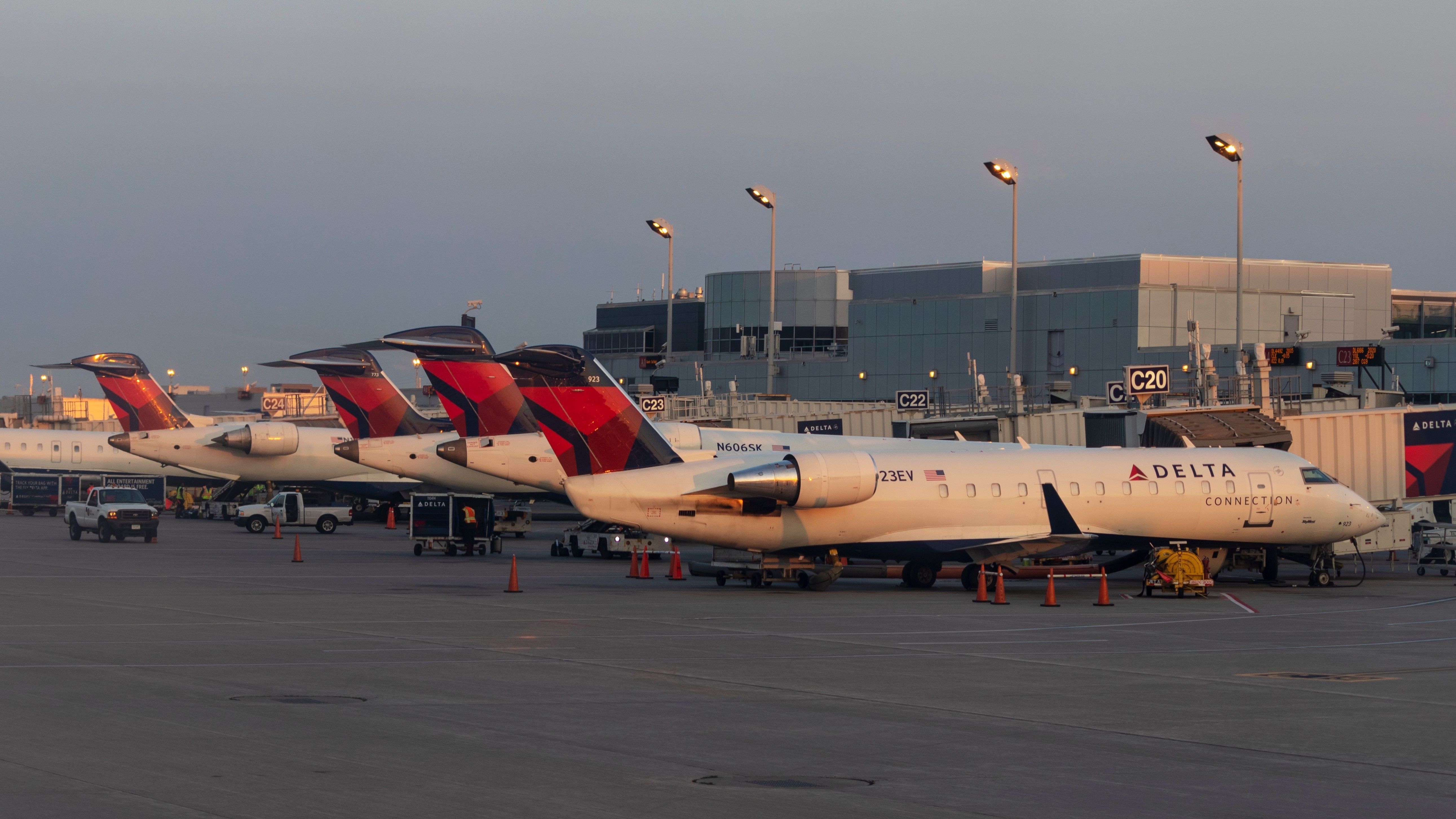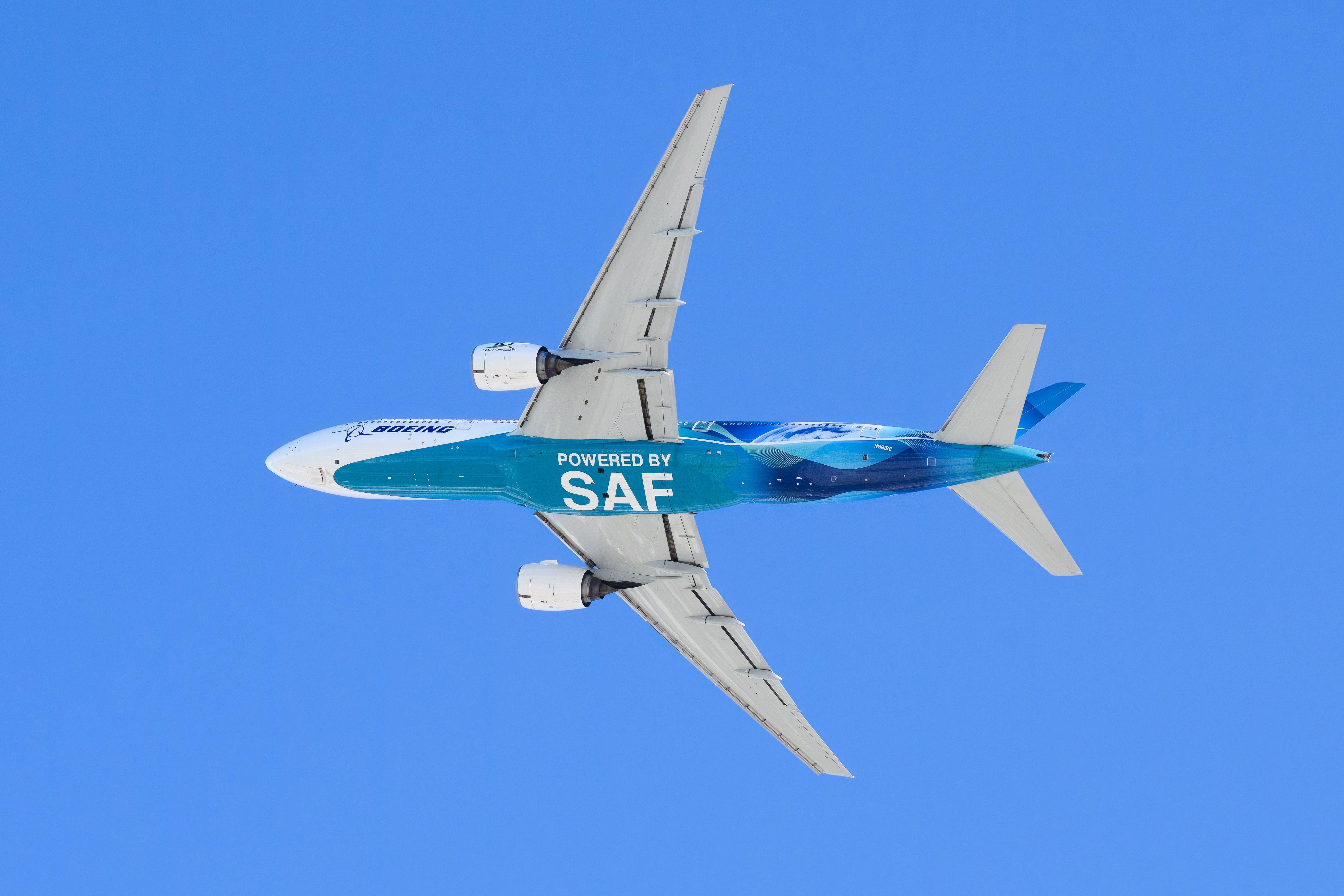Almost without exception, the aviation industry knows that adopting sustainable aviation fuel is the quickest route to net zero targets, whether interim goals for 2030 or net zero emissions by 2050. The obvious issues are around supply and cost, but what is really lacking is leadership by governments, policymakers and the current jet fuel suppliers.
Delta Air Lines is getting involved
Most of the heat in the aviation emissions debate is directed at airlines, and yet they would happily put sustainable aviation fuel (SAF) into their compatible jets if it was available in bulk at a competitive price. One airline not content to sit back and wait is US carrier Delta Air Lines (Delta), which is an anchor member of the Minnesota SAF Hub launched in 2023.
Photo: Vincenzo Pace | Simple Flying
The Minnesota SAF Hub partners include Delta, the Greater MSP Partnership, Bank of America, Ecolab and Xcel Energy. The group is committed to implementing a shared strategy for aggressively decarbonizing the airline industry by scaling SAF production and replacing conventional jet fuel.
Photo: natmac stock | Shutterstock
Yesterday, the coalition announced its progress toward developing a fully integrated SAF supply chain in Minnesota. It identified four major milestones and said progress comes from collaboration among the coalition’s members representing the entire value chain—from finance to farm to airport.
SAF blending in Minnesota
Minnesota will soon have only the third SAF blending facility in the United States, which is an amazing statistic given the wealth, size and expertise of the aviation industry across the country. When that facility is operational, projected to be in late 2025, it will provide SAF via an existing pipeline to Minneapolis-St Paul International Airport (MSP).
Photo: Jacob Boomsma | Shutterstock
MSP is Delta’s second-largest hub, using 250 million gallons of fuel annually, so it is literally working in its own backyard to secure a secure SAF supply. Delta and Flint Hills Resources are developing a facility to blend up to 30 million gallons of neat SAF at its Pine Bend refinery in Rosemount, Minnesota, likely to be the first between the coasts that can blend neat SAF with conventional jet fuel.
Shell will bring its expertise in supply chains, product quality and logistics to the project while also supplying the neat SAF. Flint Hills will blend the jet fuel it produces with the neat SAF and deliver it to Minneapolis-St Paul International via its existing pipeline, ready for uplift by airlines late next year.
Photo: Kate Scott | Shutterstock
Peter Carter, Delta’s executive vice president of External Affairs, said that while Delta has committed to purchasing millions of gallons of SAF, “there isn’t enough being produced today to fuel the world’s commercial airlines for a single week.”
“That’s why this blending facility is so important – it’s like hanging an ‘Open for Business’ sign to SAF producers to consider doing business in Minnesota, where we see SAF as a great opportunity for all players across the value chain.”
What else is happening in the hub?
Around 90% of Delta’s carbon emissions come from jet fuel, and it understands that using SAF is the best and fastest way to cut those in the near term. The airline also said that the complexity of the task means that no one company or industry can solve it on its own, which is why the Minnesota SAF Hub is so important.
Photo: Ian Dewar Photography | Shutterstock
The three other initiatives being worked on by the MN SAF Hub are:
- Making SAF cost competitive: A consortium including Bank of America, Deloitte, Delta and Ecolab is purchasing the first several million gallons of SAF each year, starting in the second half of 2025. Their goal is to scale production, drive down costs and secure multi-year demand that spurs continued growth of the SAF market.
- Establishing SAF production: In August, the FAA announced a $16.8 million grant to convert an existing Gevo ethanol and isobutanol fuel facility in Luverne, Minnesota, into a fully integrated alcohol-to-jet fuel facility for SAF production.
- SAF from next-gen feedstocks: Partners at the University of Minnesota are developing a novel crop called winter camelina seed, which can be used to produce oil for conversion into SAF. Development is positive, so the SAF Hub is working to bring the first shipment of camelina-derived SAF to MSP this fall.
This effort is an excellent example of bringing together the expertise, experience and resources of partners from right across the value chain. Minnesota is home to a variety of SAF feedstocks and has a strong history of producing biofuels. Critically, it was one of the first US states to enact a tax credit and construction incentive to support the development of a SAF economy. Surely, this is a blueprint for other states, nations and airlines to follow sooner rather than later.

